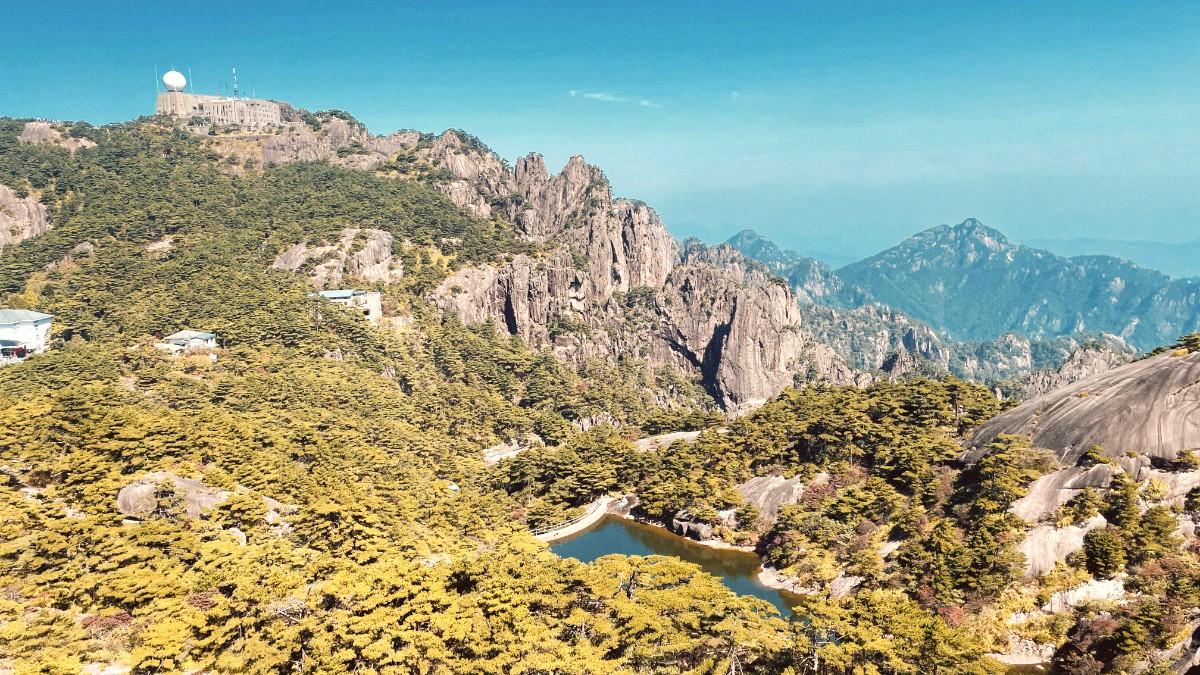
Anhui, China
Anhui cuisine originated from the historical Huizhou region. It highlights preserved ingredients, foraging, and hearty dishes. It emphasizes flavor, color, and precise temperature control. Dishes often feature robust flavors.
Prominent ingredients include bamboo shoots, wild mushrooms, chestnuts, and local tea leaves (Huangshan Maofeng tea). Cured meats and freshwater fish feature heavily. Soy sauce, Shaoxing wine, and sesame oil are common seasonings. Braising, stewing, and smoking are popular cooking methods.
Cuisine in Huangshan especially focuses on fresh, seasonal ingredients from mountains and rivers. Specialties include braised pigeon, "smelly" mandarin fish, and stone frog.
Often consists of congee (rice porridge), various noodle dishes, steamed buns (mantou, baozi), or fried dough sticks (youtiao).
Main meals, typically comprising rice, shared dishes (meat, vegetable, tofu), and sometimes soup. Restaurants open 11:00 AM - 2:00 PM for lunch and 5:00 PM - 9:00 PM/10:00 PM for dinner.
A distinctive Anhui dish. Mandarin fish undergoes slight fermentation for an unique aroma. Cooked, it offers tender, flaky texture and rich, savory flavor. Found in most local restaurants.
Often braised with pork and bamboo shoots.
Pigeon braised with medicinal herbs and local ingredients. Known for its rich, aromatic flavor.
Often considered to have health benefits.
Frogs caught from mountain streams. Chefs typically stir-fry or braise them. A local delicacy offering tender meat.
A unique local specialty.
Huangshan Maofeng Tea (famous green tea), Rice Wine (Mijiu - locally brewed), Baijiu (strong Chinese liquor).
Hui Mo (Huizhou Cookies), sweet, sticky candies made with nuts (Toffee).
Larger hotels in Tunxi (Crowne Plaza, Banyan Tree) feature fine dining Chinese restaurants.
Abundant in Tunxi, especially around Tunxi Ancient Street. Good balance of quality, ambiance, and price.
Tunxi Ancient Street hosts numerous small eateries and snack stalls. Tangkou has smaller local restaurants for mountain visitors.
Wet markets in Tunxi provide a glimpse into local life. Find fresh produce, meats, and cooked food stalls.
Great for experiencing the local food scene.
Limited outside of major hotels in Tunxi. These hotels might offer basic Western dishes.
For diverse international dining, larger cities like Shanghai or Beijing are better.
Finding strictly vegetarian or vegan options is challenging. Many dishes contain hidden animal products. Use translation cards.
Halal and kosher options are very limited or non-existent. Travelers should consider self-catering.
Difficult to guarantee allergen-free dining due to soy sauce (wheat) and cross-contamination. Carry detailed translation cards.
Use translation apps. Be ready for misunderstandings.
Carry detailed allergen cards translated into Chinese to show restaurant staff.
Even with a card, cross-contamination risks remain.
Anticipate some misunderstandings and plan accordingly, especially for severe allergies.
Consider bringing some emergency snacks.
Visit a local tea garden to sample the famous Huangshan Maofeng tea. Learn about its cultivation and preparation.
During winter, a warming hot pot meal popular and comforting. It features various meats, vegetables, and tofu cooked in a communal broth.
Compared to larger Chinese cities, specific cooking classes or organized food tours are limited in Huangshan.
Arrange visits to local tea plantations, especially those cultivating Huangshan Maofeng tea.
Local food fairs or seasonal agricultural festivals may occur.
Be ready for some language challenges, especially in smaller eateries.
Translation apps are very helpful.
Local cuisine emphasizes fresh, seasonal ingredients.
Dishes available may vary throughout the year.
A lively place for sampling local snacks, street food, and tea.
Don't miss Smelly Mandarin Fish and Huangshan Braised Pigeon for a true taste.
Ask for recommendations. Try new things at markets.
Observe daily life and local food sources.